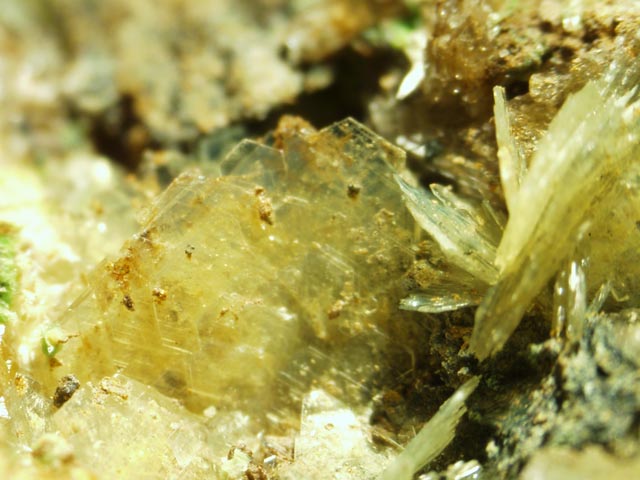Home > Uranium Minerals II – November 29 > MS0825 Schröckingerite, Zellerite
Schröckingerite, Zellerite - Sold
- White Canyon #1 mine
- Frey Point
- San Juan County
- Utah
- U.S.A.
- 4.0 by 2.7 by 2.4 cm – Miniature specimen (fits into a 5 cm cube)
Mining in White Canyon was an important part of the Cold War uranium boom (1950s-1960s). While overshadowed in production by the nearby Happy Jack mine, other claims in White Canyon also produced colorful encrustations of exotic uranium minerals. Specimens from this locality seem dominated by uranyl carbonate (vs. sulfate) minerals. This specimen features a rich crystallization of schröckingerite with accesory fibrous yellow zellerite. This is a fragile mineral specimen that may suffer some crumbling of matrix in shipment.
Schrauf (1873) described schröckingerite from Jáchymov (Czech Republic) naming the mineral in honor of discoverer Julius Schröckinger (1813–1882). Smith (1959) proposed the currently accepted formula of NaCa3(UO2)(SO4)(CO3)3F·10H2O, later reconfirmed by the more precise study of Mereiter (1986). The mineral has triclinic symmetry, but pronounced hexagonal pseudo-symmetry, which explains its characteristic six-sided platy habit. Schröckingerite here froms pseudohexagonal plates to 4 mm, with a striking daylight fluorescent yellow-green color. Also present are later fibers of pale brownish yellow to yellow zellerite. Coleman et al. (1966) named zellerite in honor of exploration geologist Howard D. Zeller, who discovered the mineral. Zellerite is a hydrated uranyl carbonate: Ca(UO2)(CO3)2·5H2O; unfortunately, the crystal structure of zellerite remains unsolved.
This specimen was part of the personal collection of Ralph Merrill, proprietor of the prolific mail order business Minerals Unlimited, obtained in 1970 from Otto Ray, a mineral collector from Salt Lake City. Merrill's collection card and label also ship with the specimen.




